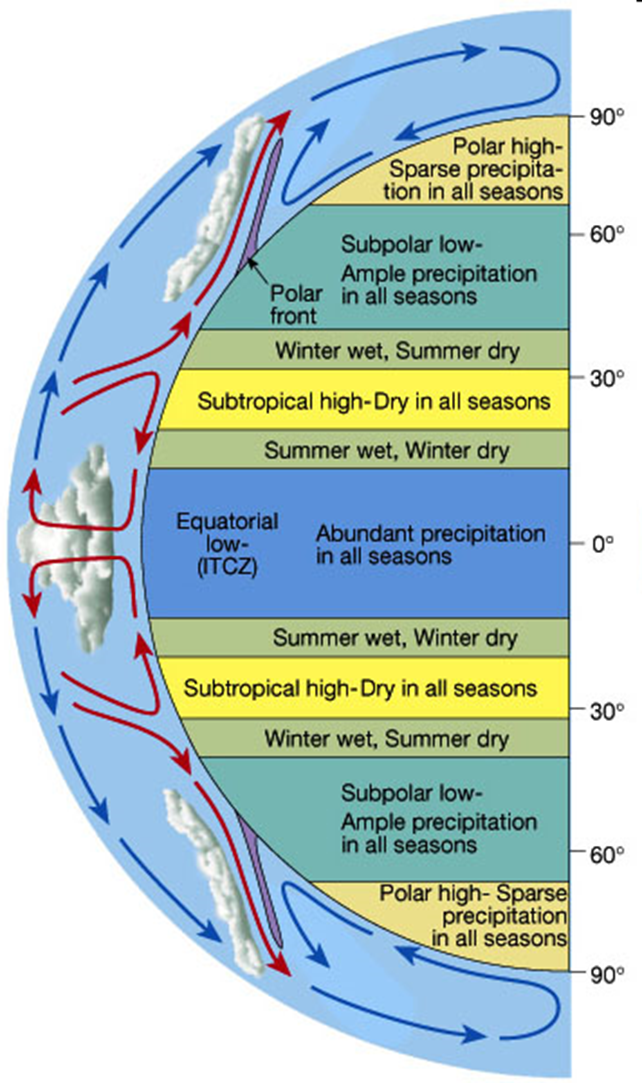Atmospheric Circulation
Circulation Cells and Climate
Below is a graphic showing a cross section of the circulation cells. Note how low pressure systems with rain form where are is rising, and high pressure systems with dry weather form where air is descending. Also, jet streams (upper altitude winds) form at the boundary between each cell. These jet streams help to move around air masses and storms.

Wind Belts and Pressure Systems
What is being shown in many images of our planet's wind belts and pressure system is an idealized image. In reality, the pressure systems form clusters or "knots" of high or low pressure in which the winds in the wind belts and storms must go around.

Circulation Cells and Climate Zones
Pressure systems coupled with latitude and incoming sunlight determine what climate an area will have.
| Polar regions 60° - 90° N |
 |
| Mid Latitudes 30° - 60° N |
|
| Subtropics 5° - 30° N |
|
| Tropics 0° |
|
| Subtropics 5° - 30° N |
|
| Mid Latitudes 30° - 60° N |
|
| Polar regions 60° - 90° N |
Connection between Pressure Systems and Circulation Cells
Rising air creates a low pressure system. Sinking air creates a high pressure system. Both a linked together to form the circulation cells
Other planets have wind belts, too. Check out this image compiled by NASA's Cassini spacecraft of Jupiter from October 31 - November 9, 2000.

<< Back |
||
